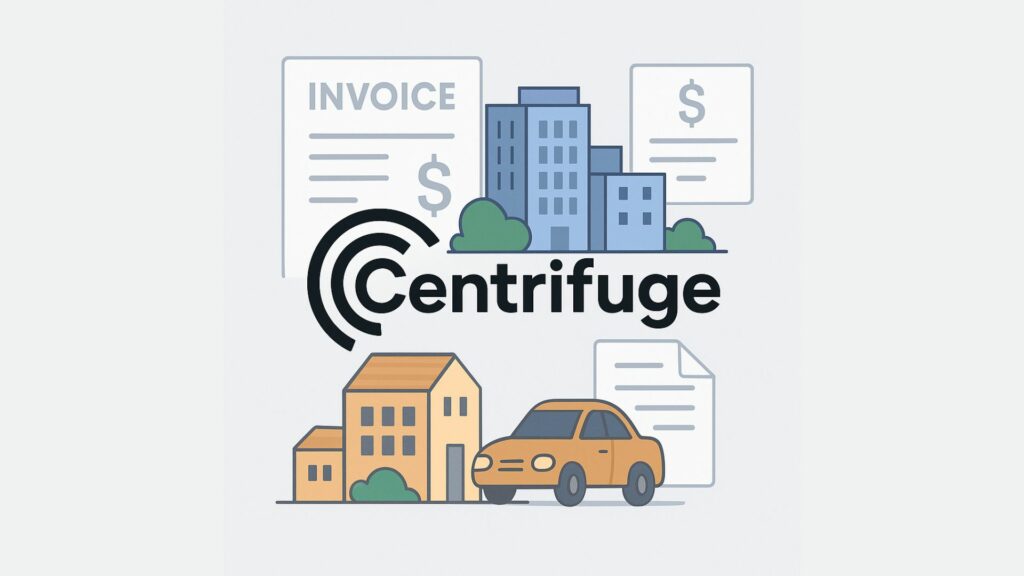Centrifuge is transforming decentralised finance by making it possible to invest in real-world assets entirely onchain.
Built as a dedicated blockchain and application layer, it empowers investors and asset managers to interact with tokenised credit, real estate, and treasuries using blockchain-native infrastructure.
With over $690 Million in financed assets and backing from top institutions, Centrifuge is now one of the leading platforms helping decentralised finance mature into a gateway for real world capital formation.
What is Centrifuge?
Centrifuge was created to make real-world asset tokenisation more transparent and cost-efficient. It operates on its blockchain, Centrifuge Chain, where assets are onboarded, converted into NFTs, and added to investment pools.
Source: Centrifuge
These pools are open to investors from multiple chains, allowing capital to flow in and out as needed.
Instead of using fixed structures, Centrifuge introduced revolving pools. This means assets can be financed or repaid at any time. An epoch system handles the coordination of investments and withdrawals.
It ensures that everything is settled fairly based on liquidity and investor priority. Pricing is calculated onchain using expected repayments, loan terms, and write-off schedules.
Centrifuge supports any asset class without restrictions. These include treasury bills, real estate, carbon credits, and trade finance.
The Private Data Layer allows issuers to share detailed financial documents privately with selected investors.
All of this is packaged into a system that helps issuers raise funds and helps investors gain direct exposure to real world income without having to trust centralised institutions.
Its Partners and Ecosystem
Centrifuge has built partnerships with both decentralised protocols and traditional finance players.
It was the first project to allow MakerDAO’s stablecoin to be backed by tokenised real-world assets. Later, it expanded to work with Aave, Morpho, and others to bring further liquidity into its pools.
Source: Centrifuge
One of its biggest achievements came in 2022 when BlockTower Capital financed $220M worth of assets through Centrifuge. MakerDAO contributed $150M as senior capital. This was the first large-scale credit fund to use onchain infrastructure for real-world lending.
Other partners include the Web3 Foundation, which invested in tokenised treasury bills, and Archax, a regulated UK exchange. Centrifuge also works with Anemoy, Celo, Jump Trading, and Coinbase.
These integrations cover everything from legal support and custody to liquidity, stablecoins, and KYC verification.
To support broader adoption, Centrifuge helped launch the Real World Asset Summit and joined the Tokenised Asset Coalition.
It also developed a permissioned market on Morpho with Coinbase Verification, making it easier for 125 million users to access asset pools with just one click.
The CFG Token
CFG is Centrifuge’s native token used for governance, staking, and transaction fees. It gives holders voting power over protocol upgrades, treasury usage, and economic changes.
CFG also secures the network through staking, where participants earn annual returns between 10% and 12%.
Source: Centrifuge
The token has a total supply of 550 million. About 450 million are currently in circulation. Token usage is also supported on Ethereum and Base, where CFG is available as an ERC20 token for compatibility with other decentralised applications.
CFG tokens were distributed as follows:
- 30% for crowdloan rewards
- 20% for the core team with a long-term vesting schedule
- 20% for ecosystem development and community growth
- 30% for the Centrifuge treasury managed through onchain governance
The treasury is valued at around $60M and is used to fund new asset pools, pay developer grants, and support network operations.
Staking rewards have shifted over time from being inflation-based to participation-based, encouraging active governance rather than passive holding.
How to Use a Centrifuge for Profit
For investors seeking returns that are not tied to crypto price movements, Centrifuge provides a more stable and transparent alternative.
Its tokenised asset pools include credit, real estate, and other fixed-income instruments. These are structured using recognised legal frameworks and real economic flows.
Each pool is tied to a legal entity known as a special purpose vehicle. This keeps the pool separate from the issuer’s core business and protects investors in case of bankruptcy. Documents such as subscription agreements and tax forms are handled through built-in onboarding systems.
Source: Centrifuge
Investors can choose between different tranches depending on their risk appetite. Senior tranches offer predictable yields and repayment priority.
Junior tranches carry more risk but come with higher potential returns. Issuers usually hold the junior tranche to ensure they are aligned with investor interests.
Everything from NAV calculations to repayment status is visible onchain. Performance data is updated in real time, and assets are priced based on actual expected repayments.
If loans go overdue, they are written down according to predefined schedules, and any recovery proceeds are returned to token holders.
For asset managers, Centrifuge reduces administrative costs and improves reporting. They can manage portfolios, issue tokens, and distribute yield using a single dashboard.
Many have reported operational savings of up to 150 basis points and lower borrowing costs compared to traditional setups.
Conclusion
Centrifuge offers a practical and efficient way to invest in real-world assets using blockchain infrastructure.
It removes the need for intermediaries, introduces better transparency, and helps both issuers and investors access capital in a more reliable way. Its partnerships with major protocols and institutions show that the model works across different types of markets.
For anyone looking to expand beyond speculative crypto tokens, Centrifuge provides an accessible route into real-world yield. As the sector continues to mature, Centrifuge is well-positioned to be a key platform connecting decentralised finance with the broader economy.

